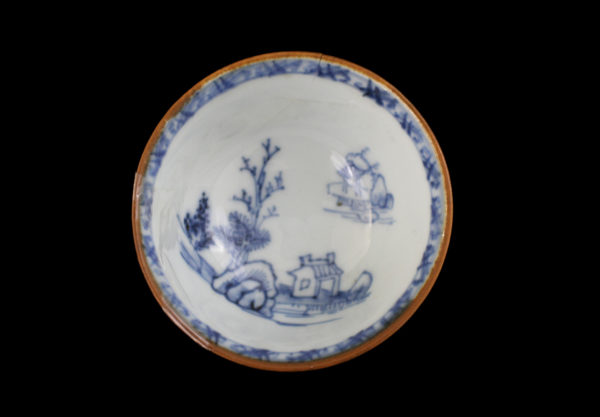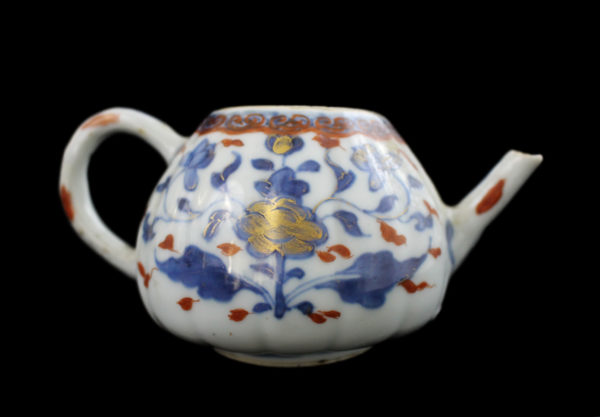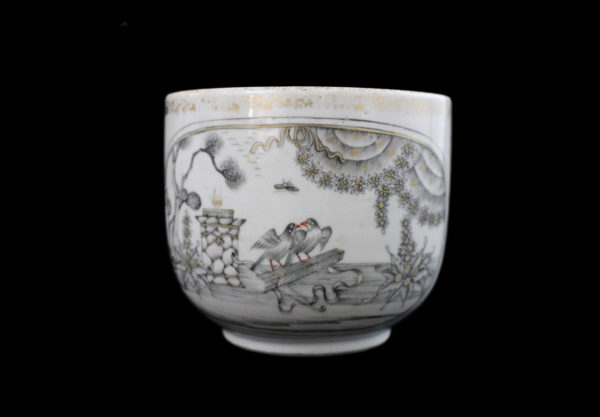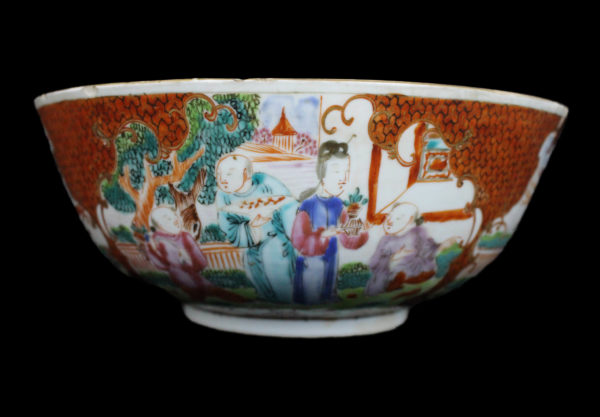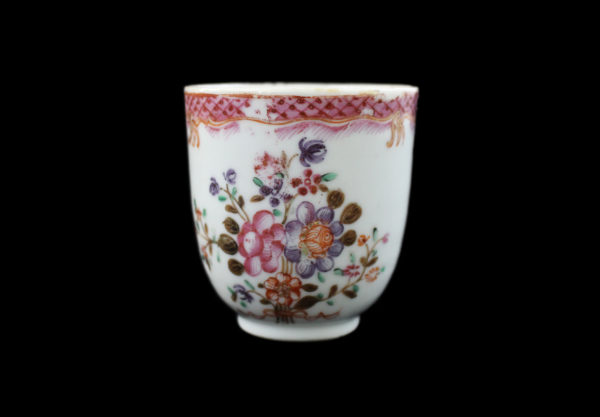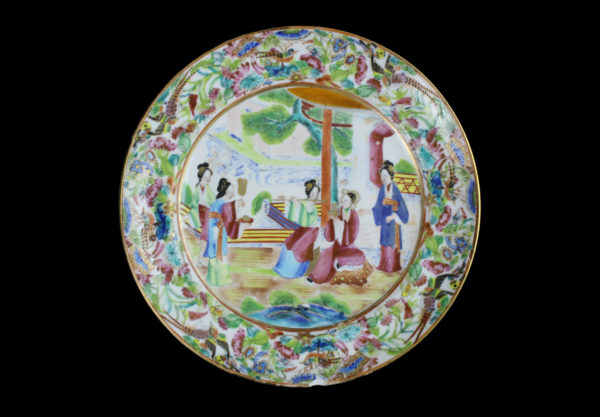Designs
What's in Our Collection?
Batavian Ware
This type of porcelain ware was made in Jingdezhen during the Ming (1368–1644) and Qing (1644 to 1912) dynasties. This design has a brown glaze on the outside of the tea bowl and usually had a blue underglaze or overglaze colored enamels. These items were referred to as ‘Batavian ware’ due to the Dutch East India Company port in Java called Batavia in which this type of porcelain was shipped in large quantities through this port. This port is now called Jakarta.
Clobbered Ware
Porcelain that is referred to as clobbered ware are items that were made during the 18th and 19th century in Holland and England. To create this type of ware there would be an original underglaze of blue and white with a later addition of embellished color. More color was added in an effort to make not sold blue and white porcelain sellable.
Scenery
Scenery designs are quite prominent in our collection. There are several different ways to create scenery on a piece of porcelain. One such way is to use overglaze enamels. This method involves metallic oxides and has been used in China and Japan for centuries. The oxides are ground down and mixed with water and a low-melting glaze. In order to suspend the decoration tannic acid is used. The image is placed on already fired porcelain and then fired at a low temperature. [1]
Footnote:
[1] Peterson, Susan and Jan Peterson. The Craft and Art of Clay: A Complete Potter’s Handbook. 5th ed. Great Britain: Laurence King Publishing, 1992.
